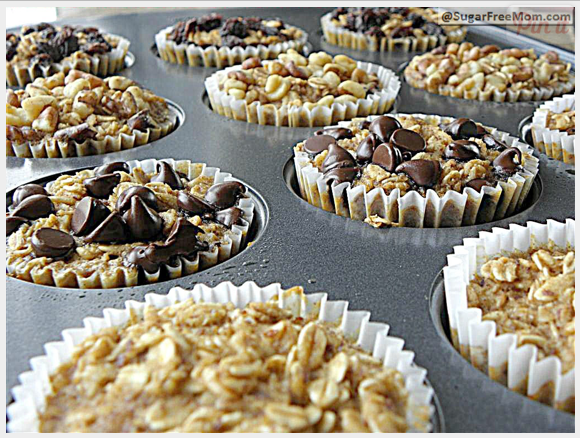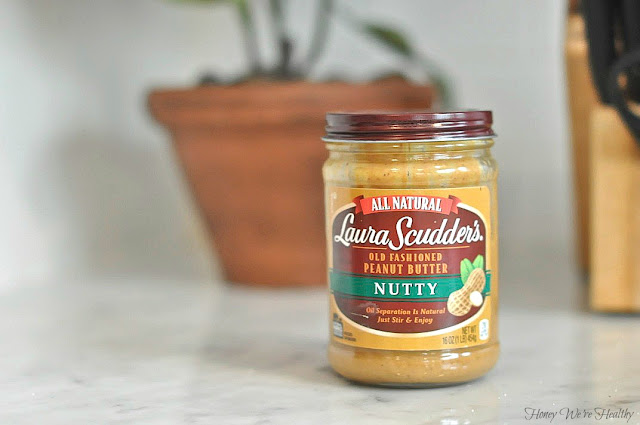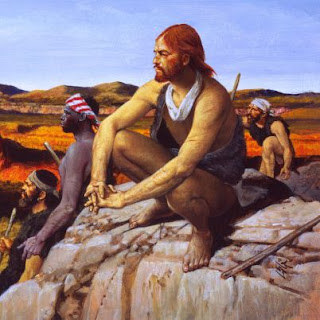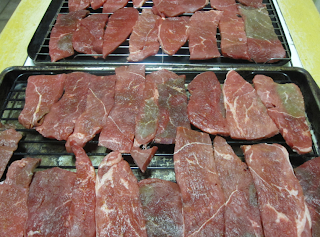Protein Oatmeal & Chocolate Chip Muffins

To stay focused on maintaining lean muscle, my diet can sometimes be kind of boring. I typically eat the same thing for breakfast for weeks at a time before changing it up. My typical breakfast would be oatmeal, protein pancakes, or maybe toast and peanut butter and ALWAYS with coffee. I changed up my bowl of oatmeal (with cinnamon, raisins, and sliced almonds) in favor of an oatmeal muffin. This is especially good for grabbing on the go on busy mornings. I found a recipe on Sugar Free Mom that is really good. You may have seen this image of hers floating around on Pinterest . via Sugar Free Mom After following her recipe, I tweaked it the second time, halving it (which still yielded 12 muffins) and adding protein powder and MILA (chia seeds- which I'll tell you more about this week). I also made mine with dark chocolate chips and walnuts this time. The chocolate bits are my favorite. And I definitely recommend adding the walnuts- they add a great crunch. Ingredients (Yield


